Harlem Postcards
06.06-09.23.2019
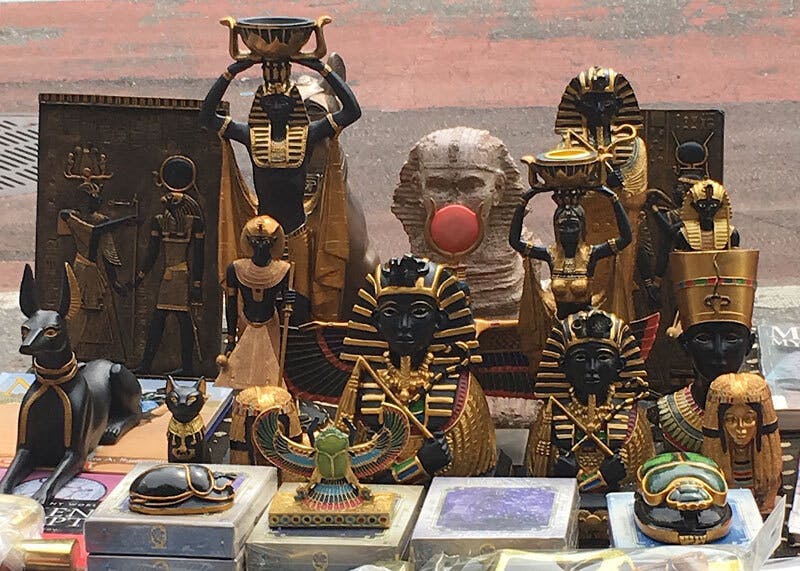
Studio Museum 127, 429 W. 127th St.
On view at Studio Museum 127, Harlem Postcards is an ongoing project that invites contemporary artists of diverse backgrounds to reflect on Harlem as a site of cultural activity, political vitality, visual stimuli, artistic contemplation and creative production. Representing intimate and dynamic perspectives of Harlem, the images reflect the idiosyncratic visions of contemporary artists from a wide range of backgrounds and locations. Each photograph has been reproduced as a limited edition postcard available free to visitors.
This season, the featured artists include Salome Asega, Leslie Hewitt, Expanding the Walls participant Skye Mayo, and Fred Wilson.

Citi. Proud Sponsor of Harlem Postcards.
Proud Sponsor of Progress.
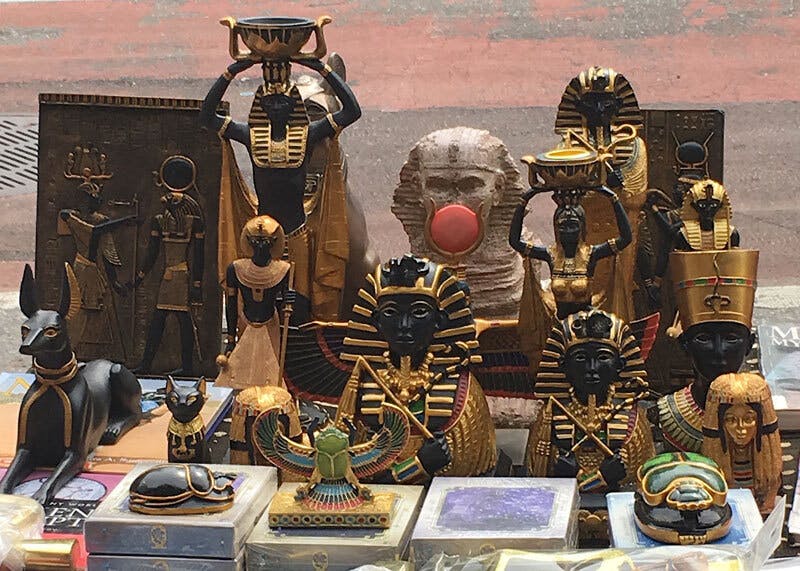
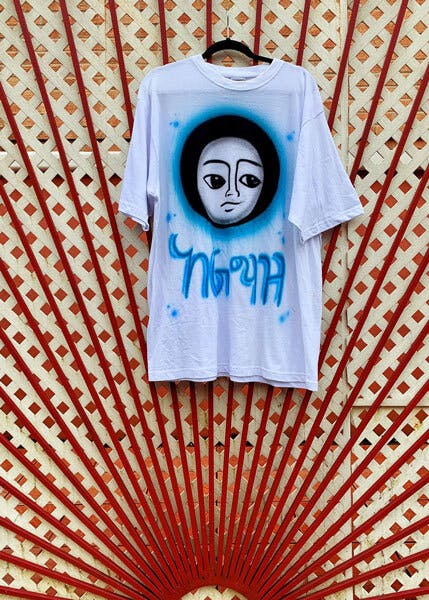
almaz is an extension of Salome Asega’s “on the line,” a series of digital and archival explorations started in 2012. Asega recontextualizes found family photos and creates postcards to send back to her grandmother in Addis Ababa, Ethiopia. For Harlem Postcards, she walked around Harlem and photographed a collection of objects that remind her of home—a cassette tape, kitchen cloth, earrings, netelas, and this airbrushed shirt of a Coptic angel with her grandmother’s name, “Almaz,” written in Amharic. Almaz means diamond. Almaz means brilliance. The wrought-iron design on this garage gate radiantly holds the shine of the diamond at its center. This decorative iron is found all over the neighborhood, in front of homes and along brownstone steps, but is usually painted Black. This vibrant red channels energy and determination.
Salome Asega is an artist and design researcher whose practice explores multiplicity and collaboration through technology and immersive experiences.
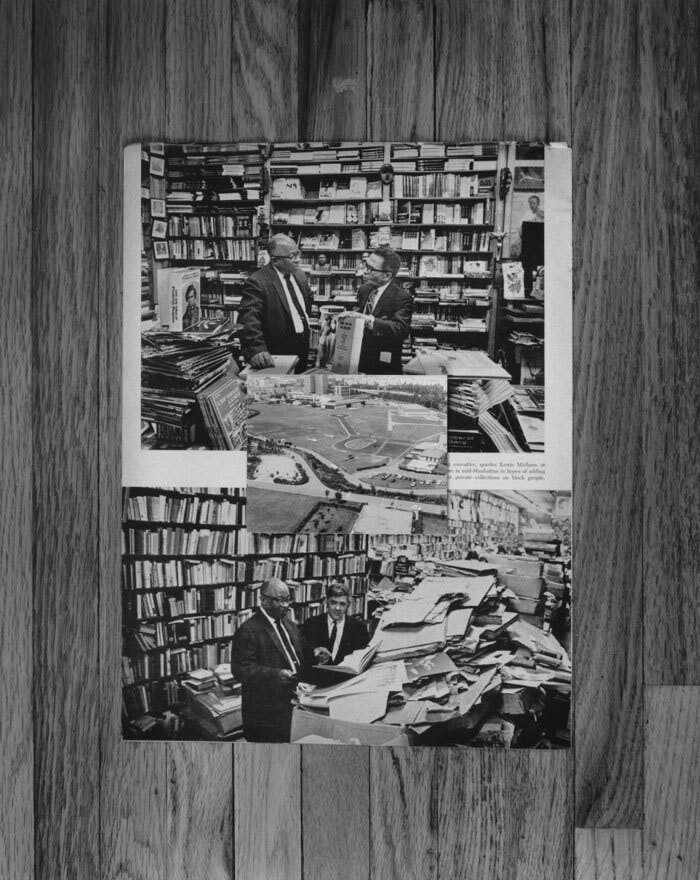
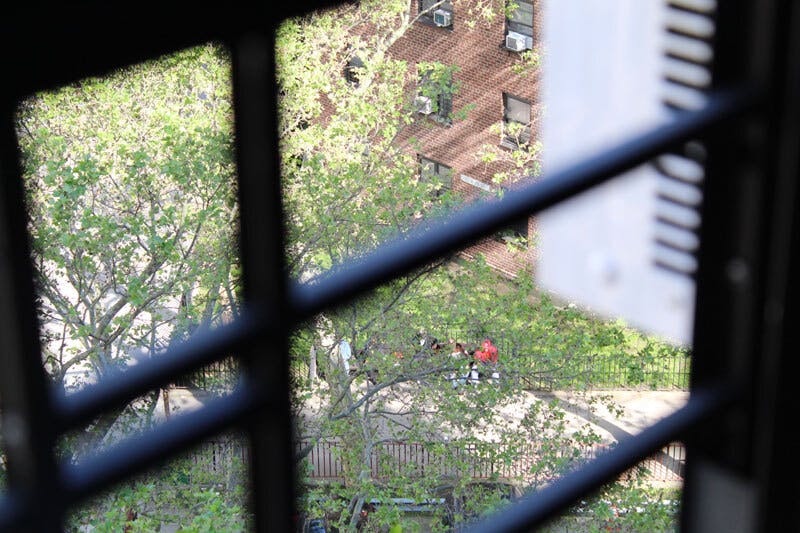
I was born and raised on Burnside Avenue in the Bronx. I had some of the best moments of my childhood there, but it also holds my worst memories. I moved to Harlem when I was around six or seven years old and I have lived here ever since. Honestly, living here has shown me things that no one would see anywhere else in New York. Black pride, Black representation, but most importantly, a Black community that cares about its neighborhood and unique culture. It’s really amazing how lively the streets of Harlem are, filled with Black people, people proud to be themselves and not afraid to show who they are and their culture. Even in the signs and graffiti that are around Harlem, you can see that pride, and how it can’t be taken away. I am grateful that I can see and experience myself, through my own lens. I picked photos that show Harlem from my window. I have seen cookouts, parties, and people just gathering outside of my building, with the sound of distant laughter and people reminiscing on the past. Usually people think Harlem is a dangerous and disgusting place, but it truly isn't. It's a place that represents family, unity, closeness, and pride. I was influenced by Lorna Simpson, who takes photos of her community to portray it in a different light, as well as the paintings of Jordan Casteel.
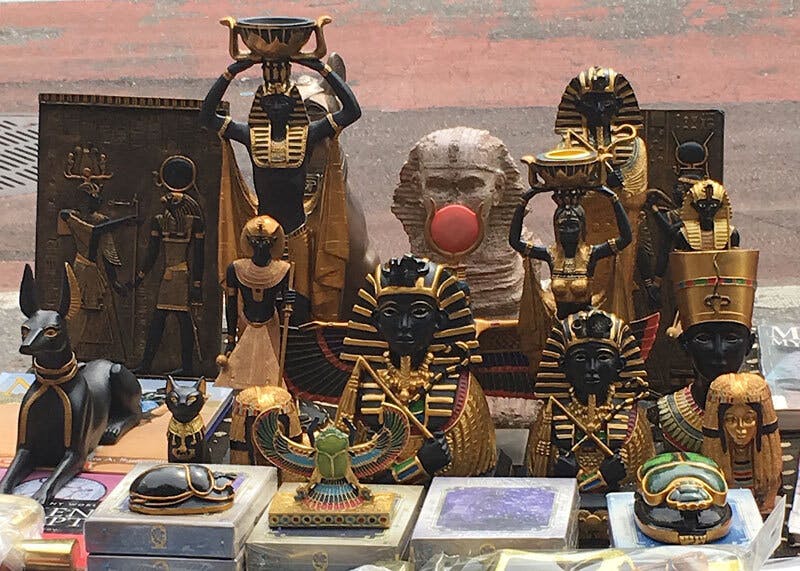
While walking across 125th Street, shopping and speaking to street vendors, I was reminded of my father. As a boy we walked across town on that street to explore the rich cultural backdrop of the area that he was raised in. What is captured in my photo Black EGYPT is a strong evocation of “Afro-Americana.” More memories of my father emerged. As a young artist I visited him in Cairo, Egypt, where he worked as a civil engineer, heading a project to rebuild Port Said. Years later I returned several times to create works for the Cairo Biennial and the Whitney Biennial. Black EGYPT suggests a powerful affirmation of ancient Egyptian/Nubian Blackness. It is as significant a visual and conceptual statement as any vernacular cultural artifact in America. I must say that 125th Street has many varied gems of displays. Several of these, on folding tables on this storied Harlem street, should be in the Smithsonian!
Harlem Postcards Summer 2019 is organized by Mia Matthias, Curatorial Fellow, and Hanna Girma, Curatorial Fellow.
Harlem Postcards
06.06-09.23.2019

Studio Museum 127, 429 W. 127th St.
On view at Studio Museum 127, Harlem Postcards is an ongoing project that invites contemporary artists of diverse backgrounds to reflect on Harlem as a site of cultural activity, political vitality, visual stimuli, artistic contemplation and creative production. Representing intimate and dynamic perspectives of Harlem, the images reflect the idiosyncratic visions of contemporary artists from a wide range of backgrounds and locations. Each photograph has been reproduced as a limited edition postcard available free to visitors.
This season, the featured artists include Salome Asega, Leslie Hewitt, Expanding the Walls participant Skye Mayo, and Fred Wilson.

Citi. Proud Sponsor of Harlem Postcards.
Proud Sponsor of Progress.


almaz is an extension of Salome Asega’s “on the line,” a series of digital and archival explorations started in 2012. Asega recontextualizes found family photos and creates postcards to send back to her grandmother in Addis Ababa, Ethiopia. For Harlem Postcards, she walked around Harlem and photographed a collection of objects that remind her of home—a cassette tape, kitchen cloth, earrings, netelas, and this airbrushed shirt of a Coptic angel with her grandmother’s name, “Almaz,” written in Amharic. Almaz means diamond. Almaz means brilliance. The wrought-iron design on this garage gate radiantly holds the shine of the diamond at its center. This decorative iron is found all over the neighborhood, in front of homes and along brownstone steps, but is usually painted Black. This vibrant red channels energy and determination.
Salome Asega is an artist and design researcher whose practice explores multiplicity and collaboration through technology and immersive experiences.


I was born and raised on Burnside Avenue in the Bronx. I had some of the best moments of my childhood there, but it also holds my worst memories. I moved to Harlem when I was around six or seven years old and I have lived here ever since. Honestly, living here has shown me things that no one would see anywhere else in New York. Black pride, Black representation, but most importantly, a Black community that cares about its neighborhood and unique culture. It’s really amazing how lively the streets of Harlem are, filled with Black people, people proud to be themselves and not afraid to show who they are and their culture. Even in the signs and graffiti that are around Harlem, you can see that pride, and how it can’t be taken away. I am grateful that I can see and experience myself, through my own lens. I picked photos that show Harlem from my window. I have seen cookouts, parties, and people just gathering outside of my building, with the sound of distant laughter and people reminiscing on the past. Usually people think Harlem is a dangerous and disgusting place, but it truly isn't. It's a place that represents family, unity, closeness, and pride. I was influenced by Lorna Simpson, who takes photos of her community to portray it in a different light, as well as the paintings of Jordan Casteel.

While walking across 125th Street, shopping and speaking to street vendors, I was reminded of my father. As a boy we walked across town on that street to explore the rich cultural backdrop of the area that he was raised in. What is captured in my photo Black EGYPT is a strong evocation of “Afro-Americana.” More memories of my father emerged. As a young artist I visited him in Cairo, Egypt, where he worked as a civil engineer, heading a project to rebuild Port Said. Years later I returned several times to create works for the Cairo Biennial and the Whitney Biennial. Black EGYPT suggests a powerful affirmation of ancient Egyptian/Nubian Blackness. It is as significant a visual and conceptual statement as any vernacular cultural artifact in America. I must say that 125th Street has many varied gems of displays. Several of these, on folding tables on this storied Harlem street, should be in the Smithsonian!
Harlem Postcards Summer 2019 is organized by Mia Matthias, Curatorial Fellow, and Hanna Girma, Curatorial Fellow.
Studio Museum 127, 429 W. 127th St.